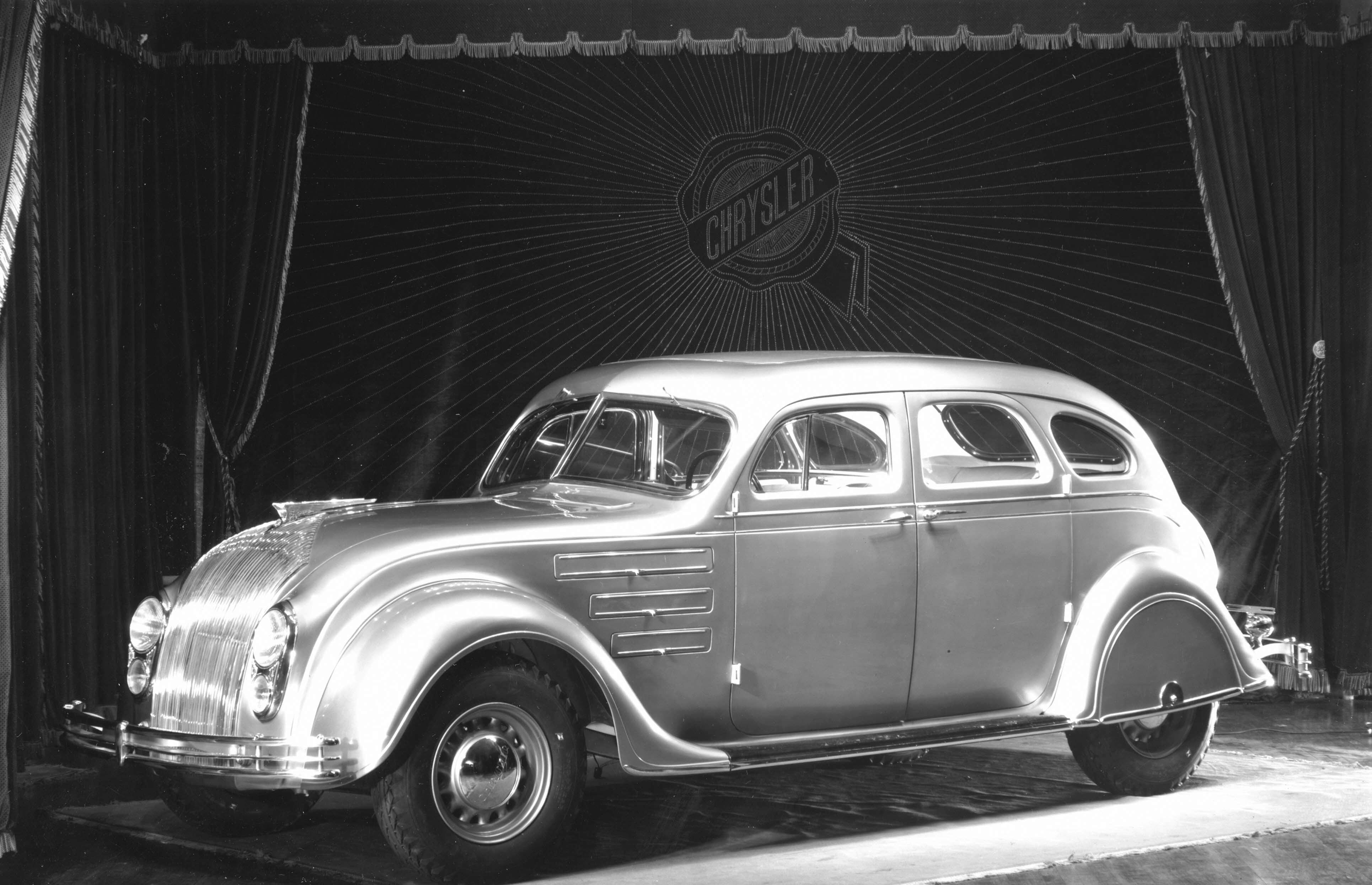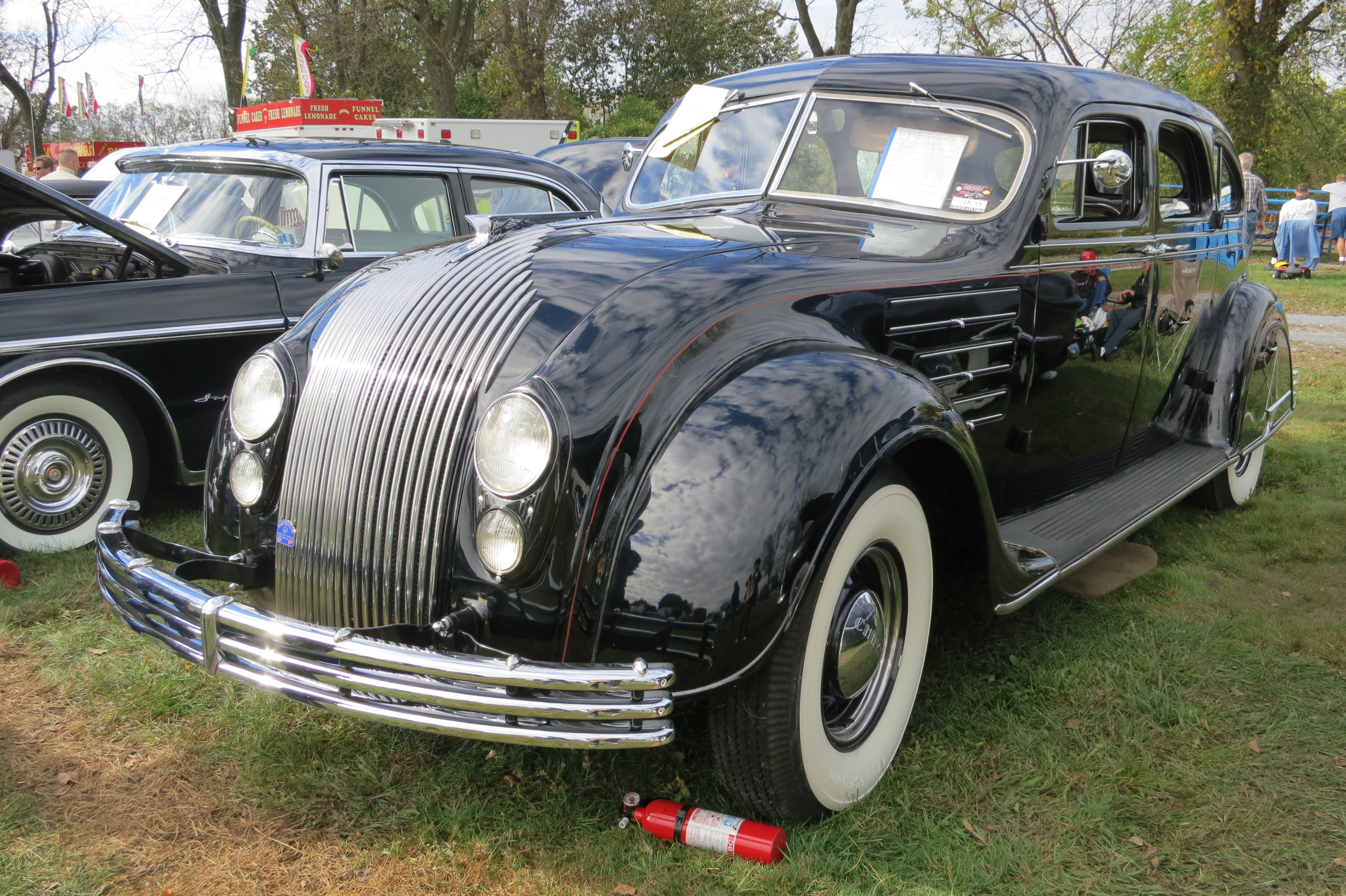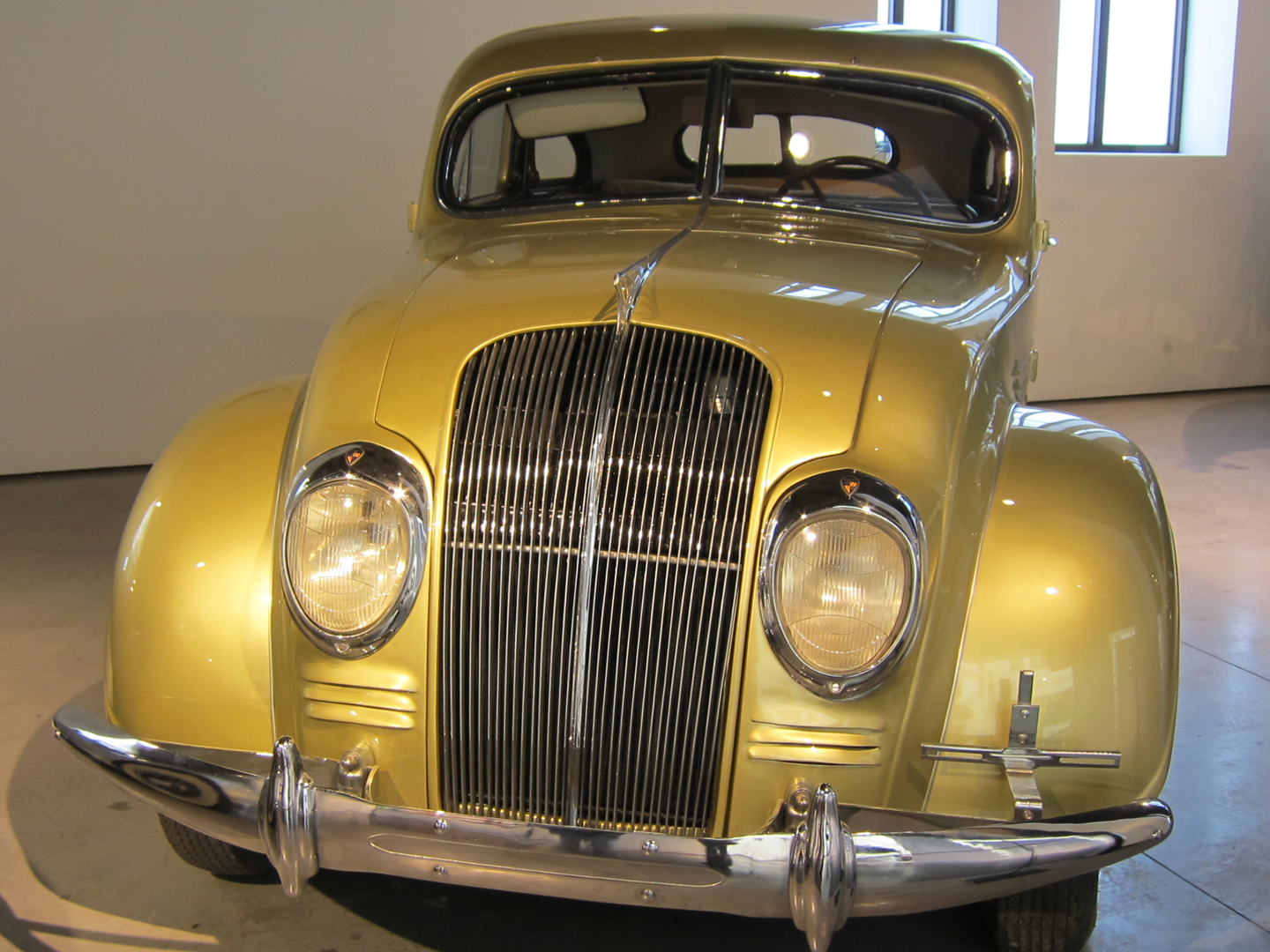Classic Car History: Airflow
Posted by Jil McIntosh on Sep 15th 2020
Mention “automotive flop,” and most people go straight to the Edsel. But in the 1930s, Chrysler created the Airflow, a car it thought would turn the auto industry around, and which ended up dying a fairly quick death.
The Airflow was a technical marvel for its day, and some of the forward-thinking ideas in its creation are still used in vehicle engineering today.
Walter Chrysler worked at a few automakers – including as the president of Buick – before producing a car under his name in 1924.
A few years later, Chrysler engineer Carl Breer thought vehicles could be designed to reduce wind resistance. Working with flight pioneer Wilbur Wright, Breer’s team built a wind tunnel in the late 1920s for testing wooden models. Surprisingly, they found that contemporary cars did better when they were facing backwards, and so they began work on vehicle aerodynamics.

Ultimately, the Airflow became the first car designed with the aid of a wind tunnel. It was shaped like a zeppelin, with a rounded hood and tapered rear. The body was a monocoque structure with an internal frame for support. The engine was over the front axle, while the back seat was placed ahead of the rear axle.
What was conventional on it? Most cars didn’t have trunk compartments or trunk lids, and the Airflow didn’t either; you stashed your stuff behind the rear seat. All-steel roofs were still relatively rare – they needed large steel panels, which most mills couldn’t yet produce – and so the Airflow got the more common roof design with a central canvas panel.

Walter Chrysler was a brilliant businessman, but he made a rare misstep with the Airflow. It was a huge deal and he wanted it released for 1934, his company’s tenth anniversary, which seemed to rush the process. He debuted it at the New York Auto Show in January of that year, where it drew a record number of orders.
But production was only just starting, and deliveries wouldn’t begin until April. A lot of buyers didn’t want to wait and canceled their orders. Rumors also started that the cars were late because engineers were still trying to fix problems with them.

The Airflow was initially going to be just a DeSoto, but because of the anniversary, it was extended into Chrysler and Imperial too. It was DeSoto’s only offering for 1934, powered by a six-cylinder engine. The Chrysler and Imperial models were eight-cylinder, although around 400 six-cylinder Chrysler Airflows were built for export, including to Canada.
That first year, slightly fewer than 25,000 Airflows went out the door, across all three brands. That wasn’t horrific, but it also wasn’t the sales success the company thought it would be. Chrysler’s conventionally-styled six-cylinder models outsold it.
Because it was DeSoto’s sole model, that brand got hit the hardest. Its total of 13,940 cars marked a 47% drop from the previous year’s sales.

For 1935, the Airflow got a mild makeover. The rounded grille was given a V-style peak, it got a new hood, and its three-bar bumper became a single piece. Chrysler’s conventionally-styled cars were renamed Airstream, and that model was added to DeSoto’s lineup. At both brands, the Airstream vastly outsold the Airflow, which moved only 14,348 copies.
There was another Airflow makeover for 1936. The car got another new front end, new headlamps, an all-steel roof and a trunk lid, and the limousine was discontinued. It still didn’t help, and Airflow sales fell to 11,275.
For 1937, DeSoto and Imperial were out of the picture. Chrysler alone offered the Airflow, in coupe or sedan. Styling was slightly tweaked once more, but only 4,610 customers were interested. It didn’t return for 1938, and the car that was meant to change the auto industry was finished.

Why did it fail? In retrospect, there doesn’t seem to be one overwhelming reason. It might have been the styling, although it set a record for pre-orders. It might have been its delayed introduction, although sales didn’t pick up when deliveries were running smoothly. It was pricey, but you got a lot for it. Perhaps it was just that the futuristic Airflow was too far ahead of its time.
Here are some other interesting tidbits about the Airflow…
- The prototype Airflow had a curved windshield, which improved aerodynamics. The production models used a two-piece, flat-glass windshield that was less expensive, but the largest limousine kept the one-piece curved windshield – and was the first production car to use one.
- The Airflow was the first car with “automatic” overdrive transmission. It was a three-speed manual, and at 35 mph, the driver engaged the overdrive by momentarily lifting off the throttle. The unit changed the gear ratio, and so at 60 mph, the engine speed was what you’d expect at 40 mph.

- Each Airflow series cost the same, no matter if you got a coupe or sedan. For 1934, the DeSoto and Chrysler Airflows came in one series each, at $995 and $1,345 respectively. The Imperial had three series, ranging from $1,625 up to $5,145 for the largest, limited-production limousine.
- To advertise the Airflow’s solid construction, one was pushed off a cliff and then driven away after it landed on its wheels. Race driver Harry Hartz set 72 stock car speed and endurance records at Daytona Beach in a 1934 Airflow.

With only a four-year lifespan and relatively few cars sold, the Airflow isn’t exactly an everyday find. But if you do get your hands on one, there are Airflow clubs to help you with restoration, and parts are still available. There’s also a following for the Airstream, and while it’s not as offbeat as the Airflow, it’s still a beautiful car in its own right.
Chrysler Airflow Parts
Classic Airflow parts are available at Collectors Auto Supply. We specialize in hard-to-find classic car parts and classic truck parts too. Our vintage car parts are custom made from the original manufacturers specifications to precisely fit your classic car. Collectors Auto Supply is the best resource for automotive restoration supplies and vintage car parts. Shop now and see for yourself.

